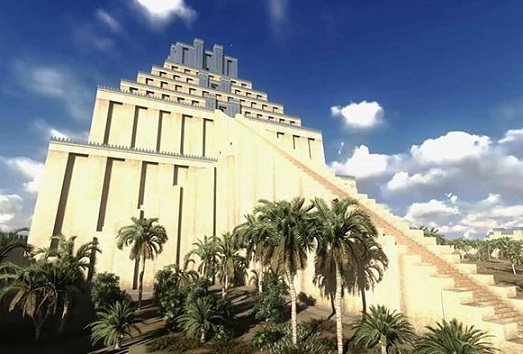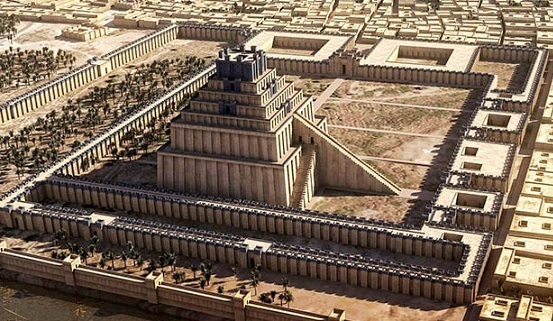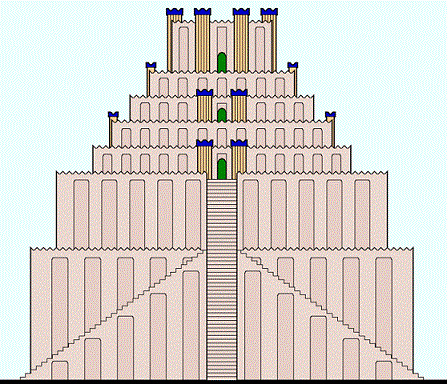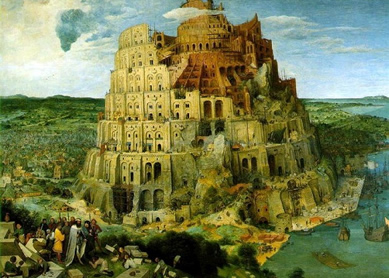


Interesting facts about the Tower of Babel
Location: Babylon, Iraq
Built: about 2nd millennia BC.
Purpose: religious
Height: 91 meters
The Tower of Babel, known from the Old Testament, has a real prototype that once stood in Babylon. Only few ruins remain in place today, however. According to the Old Testament, namely the book of Genesis, the Tower of Babel was built by people shortly after the flood. Back in the day people were one big family and spoke the same language. They came to the land of Shinar, between the rivers of the Euphrates and the Tigris. They decided to built a tower as a sign of their might. God, however, had different plans. He gave people different languages and people stopped understanding each other. Misunderstanding led to conflict within human family and various nations dispursed from the Tower of Babel. Thus the magnificent building was never completed. Most likely the tower of Etemenanki in Babylon became the prototype of the Tower of Babel.
Genesis 11
The Tower of Babel
11 Now the whole world had one
language and a common speech. 2 As people moved eastward,[a] they
found a plain in Shinar[b] and settled there.
3 They said to
each other, “Come, let’s make bricks and bake them thoroughly.” They
used brick instead of stone, and tar for mortar. 4 Then they said,
“Come, let us build ourselves a city, with a tower that reaches to
the heavens, so that we may make a name for ourselves; otherwise we
will be scattered over the face of the whole earth.”
5 But
the Lord came down to see the city and the tower the people were
building. 6 The Lord said, “If as one people speaking the same
language they have begun to do this, then nothing they plan to do
will be impossible for them. 7 Come, let us go down and confuse
their language so they will not understand each other.”
8 So
the Lord scattered them from there over all the earth, and they
stopped building the city. 9 That is why it was called
Babel[c]—because there the Lord confused the language of the whole
world. From there the Lord scattered them over the face of the whole
earth.

Etemenanki (from the Sumerian "Temple of the foundation of heaven
and earth") was not the only ziggurat, that is, a stepped pyramid,
in the land of Mesopotamia. The inhabitants of this region at
various times loved to build pyramids. However, the largest pyramid
stands in Babylon and it was dedicated to God Marduk. Apparently the
construction of the Tower of Babel was begun in the second
millennium BC by the Sumerians. It is known that the reconstruction
was carried out by the king Hammurabi (1792-1750 BC). The city of
Babylon was destroyed in 689 BC by the Assyrian troops of the king
Sennacherib who claimed that the destroyed Etemenanki.
However, its maximum size Etemenanki received during the reign of
the New Babylonian dynasty in the 6th century BC, after the
Babylonian Empire and the Midian kingdom destroyed the Assyrian
kingdom. Then he was dedicated to the god Marduk. Who exactly he was
dedicated to is not known. It is known that the Tower of
Babel-Etemenanki reached a height of 91 meters. The Jews who were
resettled to Babylonia after the fall of Jerusalem were apparently
impressed by such a building. To such an extent that the tower
entered the epic of their people. Apparently it was Etemenanki that
is considered a possible inspiration for the biblical story about
the Tower of Babel. Of all the ziggurats, it was the highest.
The city of Babylon was restored by the king Nabopolasar and his
son Nebuchadnezzar II, the builder of the
Hanging Gardens of Babylon. It
took 88 years to rebuild the city; its dominant feature was the
temple of Marduk - the Tower of Babel. The ziggurat was restored by
Nebuchadnezzar II. Seven ziggurat platforms will reach a height of
91 meters, according to a table from Uruk. On the upper platform
stood a temple.

Nebuchadnezzar on the Tower of Babel:
The tower, the eternal home that I founded and built. I decorated my magnificent building with silver, gold, other metals, stones, enameled bricks. Fir and pine trees grow here. The tower which is the home of the foundation of the earth, is the most ancient monument of Babylon. I restored and finished it. I have decorated up the brick covered with copper. Kings of the past built it, but he did not complete it. Since then, earthquakes and thunder smashed sun-dried clay. The bricks of the building were divided. Merodach, the great god, stirred up my mind, and pushed me to restore this building. In the happy month, on an auspicious day, I undertook to build porticoes around the raw brick masses, as well as the corpus of burnt bricks. I adapted the chain, I put my inscription. As it was done in ancient times, so I exalted my creation.

In 331 BC, Alexander the Great captured Babylon and destroyed the Persian Empire. He ordered the repair of Etemenanki. However, when he returned to the ancient city in 323 BC, he noted that no progress had been made. He ordered his army to destroy the entire building in order to prepare for the final restoration. His death, however, did not prevent the reconstruction. Seleucidian king Antiochus decided to restore the Babylon Tower, but during the inspection of the ruins he stumbled and fell. After that, the young man freaked out and ordered his elephant drivers to destroy the last remnants of Etemenanki. After that, no one tried to restore the tower.